Peru
Peru is a land where history whispers from weathered ruins and nature explodes in emerald valleys and snow-capped peaks. Beyond the iconic Machu Picchu, a tapestry of experiences awaits, woven from ancient whispers and modern rhythms. Come, walk the cobbled streets of Cusco, a living testament to Inca ingenuity, and lose yourself in the vibrant chaos of Lima, a culinary capital where tradition dances with avant-garde.
Trek through the Sacred Valley, where fertile terraces whisper tales of forgotten kings, and gaze upon the enigmatic Nazca Lines, etched into the desert like celestial riddles. Immerse yourself in the rhythm of life, swaying to the melodies of panpipes and the beat of cajóns, in a land where time seems to bend and ancient spirits linger in the crisp mountain air. So, pack your sense of wonder, lace up your walking boots, and prepare to be captivated by the magic of Peru.
Cusco

Photo by Ecstk22 / Adobe Stock | Cusco, the Inca Empire's heart, is a delightful maze of cobblestone streets, grand plazas, and baroque churches. Wander through the bustling Plaza de Armas, marvel at the Qorikancha temple's Inca stonework adorned with Spanish gold, and visit the Cusco Cathedral, a masterpiece of Spanish colonial architecture.
|
Lima

Photo by CarloAndr / Adobe Stock | Lima, a UNESCO-designated gastronomy capital, tantalizes taste buds with a fusion of Andean, Spanish, and Asian influences. Savor fresh seafood ceviche, slurp up hearty noodle dishes, and embark on a food tour to uncover hidden gems in bustling markets and trendy restaurants. Marvel at the beautiful Miraflores coast enjoying cliffside walks, and visit the Larco Museum, a treasure trove of pre-Columbian art.
|
Machu Picchu
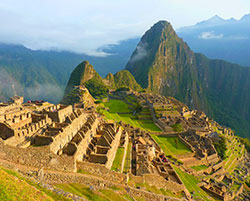
Photo by LoggaWiggler / Pixabay | Machu Picchu, the lost city of the Incas, is a must-see UNESCO World Heritage site. You can take a scenic train journey to the ancient ruins nestled high in the Andes, and enjoy breathtaking views along the way. Opt for a guided tour to learn about the history and mystery surrounding the site, or venture on a less-crowded alternative hike like the Salkantay Trek for a more intimate experience.
|
Note: Machu Picchu is not fully accessible for people with limited mobility. The site is built on a steep hill, and there are many stairs and uneven paths. However, there are some areas of the site that are wheelchair accessible, such as the Sunken Garden and the Temple of the Three Windows. There are a number of companies that offer tours of Machu Picchu that are specifically designed for people with limited mobility. These tours typically involve using a specially adapted vehicle to get to the site, and then using wheelchairs or other mobility devices to get around.
Best Time to Visit:
Dry Season (May to September):
Temperature range: 50°F - 70°F (10°C - 21°C)
This is generally considered the best time to visit Machu Picchu due to the clear skies and minimal rainfall. The weather is cooler, especially in the evenings, so make sure to pack some warm layers.
Shoulder Seasons (April and October):
Temperature range: 50°F - 75°F (10°C - 24°C)
These months can be a good compromise between the dry season and the rainy season. You might experience fewer crowds compared to the peak dry season, and the weather can still be pleasant.
Rainy Season (November to March):
Temperature range: 55°F - 80°F (13°C - 27°C)
This period sees more rainfall, and there's a higher chance of cloudy and misty conditions. The advantage of visiting during this time is that you might encounter fewer tourists, but the weather can be unpredictable and trails might be muddier.
Remember that Machu Picchu's altitude also plays a role in its climate. It's situated at an elevation of about 7,970 feet (2,430 meters), which can lead to cooler temperatures, especially at night, regardless of the season.
When planning your visit, consider your preferences for weather, the number of tourists, and your tolerance for rain. Keep in mind that weather conditions can sometimes vary from year to year, so it's a good idea to check the most up-to-date forecasts before your trip.
|
Lake Titicaca, Peru:
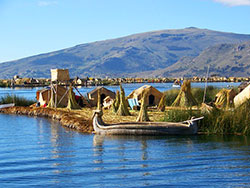
Photo by PublicDomainPictures / Pixabay | Lake Titicaca, is located in the Andes Mountains on the border of Peru and Bolivia. It is the largest lake in South America and the highest navigable lake in the world, with a surface elevation of 12,507 feet (3,812 meters). Explore the floating islands of the Uros people, who have crafted their homes and boats from reeds for centuries. Visit Amantaní Island, which is home to a number of pre-Inca ruins or Taquile Island, which is known for its traditional textiles.
|
You can enhance your experience by staying with a local family on Amantani or Taquile Island for an authentic cultural exchange and witness a traditional Andean ceremony.
Best Time to Visit:
Dry Season (May to September):
Temperature: 40°F - 60°F (5°C - 15°C)
This is the most popular time to visit Lake Titicaca. The dry season offers clear skies and less rainfall, making it ideal for outdoor activities and enjoying the lake's beauty. Nights can be chilly, so be prepared with warm clothing.
Shoulder Seasons (April and October):
Temperature: 40°F - 65°F (5°C - 18°C)
These months mark transitions between the dry and rainy seasons. The weather can still be pleasant, and there are usually fewer tourists compared to the peak dry season.
Rainy Season (November to March):
Temperature: 45°F - 65°F (7°C - 18°C)
The rainy season brings higher chances of precipitation, and there might be occasional cloudy or overcast conditions. Despite the rain, this period can be a good time to visit if you're interested in experiencing the local culture and traditions.
Lake Titicaca's altitude is around 12,500 feet (3,810 meters), which means temperatures can be cooler, especially at night.
|
Nazca Lines and Palpa Geoglyphs, Peru:
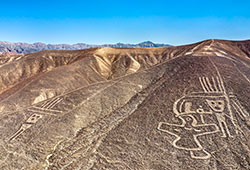
Photo by Leonid Andronov / Adobe Stock | The enigmatic Nazca Lines and Palpa Geoglyphs are some of the most mysterious archaeological sites in the world. These UNESCO World Heritage sites are ancient geoglyphs etched into the desert depicting animals, plants, and geometric shapes. While thet are only visible from the air, you can experience them from a small plane for a bird's-eye view of them. |
The Nazca Lines are located in southern Peru, about 250 miles (400 kilometers) south of Lima. They were created by the Nazca culture between 500 BC and 500 AD.
The Palpa Geoglyphs are located in the Palpa Province, about 60 miles (100 kilometers) south of the Nazca Lines. They were created by the Paracas culture between 500 BC and 500 AD. The geoglyphs depict a variety of figures, including animals, plants, and geometric shapes. They are similar to the Nazca Lines, but they are smaller and less well-known.
Another interesting destination not far from the Nazca lines is the Chauchilla Cemetery, a UNESCO World Heritage Site. This is an ancient burial site featuring the remains of over 400 well-preserved mummies and archaeological artifacts from the Nazca culture. It is located about 19 miles (30 kilometers) south of the city of Nazca in Peru.
Best Time to Visit:
When planning your visit to the Nazca Lines and Palpa Geoglyphs, remember these lines are best viewed from the air, so so consider the weather which may impact visibility. The dry season is typically recommended for the best overall experience. Keep in mind that the Nazca Lines and Palpa Geoglyphs are located in a desert region, which means that temperatures can vary significantly between day and night, regardless of the season.
Dry Season (May to September):
Temperature: 60°F - 75°F (15°C - 24°C)
The dry season is generally the best time to visit the Nazca Lines and Palpa Geoglyphs. During this period, there's less chance of rainfall, and the weather is generally more comfortable for outdoor exploration. Clear skies also enhance the visibility of the lines.
Shoulder Seasons (April and October):
Temperature: 60°F - 75°F (15°C - 24°C)
These months mark transitions between the dry and rainy seasons. The weather can still be pleasant, and there might be fewer tourists compared to the peak dry season.
Rainy Season (November to March):
Temperature: 60°F - 75°F (15°C - 24°C)
The rainy season brings more frequent rainfall, which can affect the condition of the desert roads and the visibility of the lines. While visiting during this time is possible, it's important to be aware of potential weather-related challenges.
|
Travel Planning Tips:
- Altitude: Plan a few days to acclimate to higher altitudes to avoid altitude sickness if you plan to visit higher elevations.
- Currency: The Peruvian Sol (S/.) is the official currency. While US dollars may be accepted in tourist areas, carrying Soles is essential for smaller towns and local markets. ATMs are widely available in major cities.
Packing Essentials:
- Comfortable walking shoes for uneven terrain.
- Layered clothing for temperature variations throughout the day.
- Rain gear, especially during the rainy season.
- Sun protection and hat, particularly at higher altitudes.
- Peruvian adapter plug for electronic devices.
Transportation:
- Domestic flights: Convenient for covering long distances quickly, especially for those with limited time. Consider budget airlines for cost-effective options.
- Buses: A popular and affordable option connecting major cities and towns across Peru. They offer a chance to experience local culture and interact with fellow travelers.
- Trains: Available on specific routes, particularly between Cusco and Machu Picchu, offering scenic journeys through the Andes.
- Car rentals: Provide flexibility for self-guided exploration, but be aware of challenging road conditions in some areas, especially in the mountains. Driving in Peru requires an International Driving Permit (IDP) alongside your home country's driver's license.
Health and Safety Tips:
- Altitude: Be mindful of altitude sickness, especially when visiting Cusco (11,152 ft) and Machu Picchu (7,972 ft). Acclimatize gradually by spending a few days in Cusco before attempting strenuous activities at higher elevations.
- Exercise caution regarding your personal belongings to prevent theft, especially in crowded tourist areas.
- Avoid wearing expensive jewelry or displaying valuable items to minimize the risk of attracting unwanted attention.
- When crossing streets, be vigilant as traffic regulations might not be strictly enforced.
- Opt for bottled water to stay hydrated and avoid consuming tap water, which may not be safe.
- Take precautions against mosquito-borne illnesses such as malaria and dengue fever. Use insect repellent and wear protective clothing to reduce the risk.
- Choose reputable transportation services or arrange transfers in advance, particularly when arriving at or departing from airports.
- Stay informed about the safety conditions in the regions you plan to visit and follow advice from local authorities.
- Respect visa regulations and adhere to permitted stay durations to avoid legal complications.
South America Travel Visa Requirements
It is crucial to adhere to immigration regulations and visa requirements while traveling in South America to ensure a smooth and hassle-free journey. Overstaying your visa can lead to serious consequences in some countries. Here are some tips to help you avoid any issues related to overstaying your visa:
- Know Your Visa Requirements: Citizens of the US, Canada, and the European Union typically don't need a visa for stays under 183 days in Peru. It is very important before traveling to South America to thoroughly research the visa requirements for the specific countries you plan to visit. Each country has its own rules regarding entry, duration of stay, and visa extensions. Familiarize yourself with the visa regulations and ensure that you meet the necessary criteria.
- Check Visa Validity Period: Carefully review the validity period of your visa and make sure you understand the maximum duration of stay allowed. Some visas may have specific conditions or restrictions, such as a limit on the number of days or requirements for visa extensions. Be mindful of these details to avoid overstaying.
- Plan Your Itinerary: Plan your itinerary in advance and make sure it aligns with the duration of your visa. Consider the time you intend to spend in each country and calculate the number of days you will be staying. Allow for some buffer time to account for unexpected delays or changes in your travel plans.
- Monitor Your Visa Expiry Date: Stay vigilant about the expiration date of your visa. Mark it on your calendar or set reminders to ensure you are aware of when your visa is due to expire. Avoid leaving it until the last minute to address any necessary visa extensions or depart the country within the permitted timeframe.
- Seek Visa Extensions, if Needed: If you find yourself in a situation where you need to extend your visa due to unforeseen circumstances or changes in travel plans, contact the local immigration authorities or embassy of the respective country. Follow the proper procedures for visa extension and submit the required documentation within the designated timeframe.
- Consult with Local Authorities: If you have any doubts or questions regarding your visa status or duration of stay, seek assistance from local immigration authorities or reputable legal professionals. They can provide accurate information, guidance, and support to help you navigate the visa regulations effectively.
- Respect Local Laws and Customs: While traveling, it is essential to respect the local laws, customs, and regulations of the countries you visit. Engaging in any illegal activities or violating visa rules can have severe consequences. Stay informed about the local laws and abide by them to ensure a safe and enjoyable journey.
- Travel Advisories Stay updated on current events, local regulations, and any travel advisories when traveling abroad. Visit the US Government State Department Travel Advisories web site to check on the status of your destination.
- Enroll in the STEP Program: Travelers are also urged to enroll in the U.S. State Department's Smart Traveler Enrollment Program (STEP) to receive security messages and to make it easier to locate them in an emergency. The Department uses these security messages to convey information about terrorist threats, security incidents, planned demonstrations, natural disasters, etc. In an emergency, please contact the nearest U.S. Embassy or consulate or call the following numbers: 1 (888) 407-4747 (toll-free in the United States and Canada) or 1 (202) 501-4444 from other countries.
Remember, visa regulations and enforcement can vary from country to country. It is your responsibility as a traveler to comply with the immigration laws of the countries you visit. By being knowledgeable, proactive, and respectful of visa requirements, you can avoid any issues related to overstaying your visa and ensure a positive travel experience throughout South America.
| |
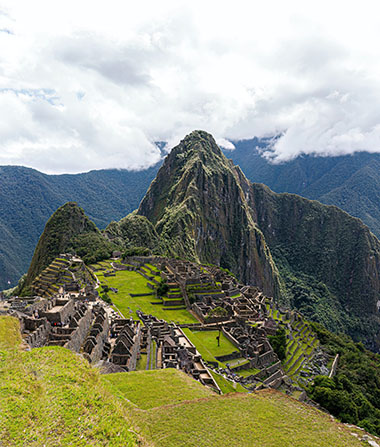 Photo by Alberto Capparelli
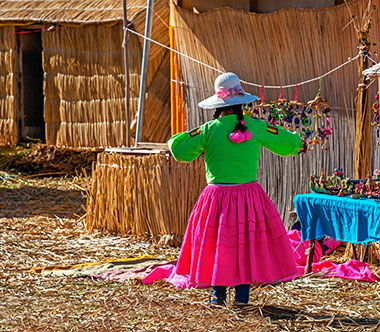 Photo by SL-Photography / Adobe Stock
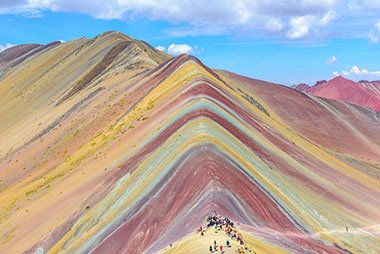 Photo by Noradoa/ Adobe Stock
|
 Photo by Alberto Capparelli
Photo by Alberto Capparelli Photo by SL-Photography / Adobe Stock
Photo by SL-Photography / Adobe Stock  Photo by Noradoa/ Adobe Stock
Photo by Noradoa/ Adobe Stock